How to Perform a Content Audit for Your SaaS: 2024 Guide

Content is a gateway that leads users from their initial awareness of your product or service to becoming paying customers. It is one of the most important - if not THE most important - elements of an inbound marketing strategy.
As organizations add content to their websites, it becomes clear that some blog posts are more effective than the rest. A content audit is one way to determine which content works and which isn't, so you can decide what to keep, update, and remove.
Today, we'll explore why and how to perform a content audit, what to include in your content audit checklist, and what steps to take after completing your audit.
Table of contents
What Is the First Thing You Need To Do When Running a Content Audit?
Knowing what information to focus on during your audit can be challenging without specific business goals in mind.
So, before you begin, sit down and think carefully about what you want to accomplish. This process can include assessing which content is driving traffic and leads, identifying content gaps, or evaluating the effectiveness of your overall content marketing strategy.
Some other common goals you might want to keep in mind as you start your audit are:
- SEO performance: Which content is ranking in search engines?
- Engagement: Which content gets the most social shares, comments, or other forms of engagement?
- Sales: Which content is most effective at driving conversions or sales?
- Traffic: Which content is attracting the most visitors?
- Leads: Which content is generating the most leads?
Once you have a clear idea of your goals for the audit, it's time to start digging in.
How Do You Perform a Content Audit?
Performing a content audit is no small task, especially if you have a large website with lots of content. Possibly, you'll need to involve some team members to help you out.
Before you start, there are a few things you need to prepare:
- A Google sheet or other tool for organizing your content audit data.
- A way to track the progress of your audit as you go, such as a spreadsheet or project management software.
- A method for evaluating the effectiveness of your content, such as a scoring system.
Once these things are in place, you can begin your audit. Here's how to go about it:
1. Start with a pilot audit
Before diving into your entire website, start with a test run on one or two web pages. This pilot will help you get accustomed to the process and ensure your tools and methods work correctly.
Your pilot audit will guide how to proceed with the rest of your content audit.
For example, if you're testing different methods for evaluating the effectiveness of your content, you might want to go back and revise your scoring system after completing your pilot audit.
If you're using a project management tool to track your progress and it's not working well, you might want to try another one.
But, most importantly, performing a pilot audit will help you develop a plan for the whole project.
- Sample your data: Take a small sample of your content inventory and run an audit to understand how easy or difficult the process is and how long it will take.
- Involve your team: If you have team members who will be helping you with the audit, involve them in the pilot. Doing so will help ensure that everyone is on the same page and knows what to expect.
- Determine your process: Once you know what tools and methods work best, you can develop a plan for how to perform your audit on the rest of your website.
- Analyze your results: Take a close look at your pilot audit results. Identify any areas where you need to make changes or improvements.
- Prioritize: Decide which content needs to be audited first, based on traffic, engagement, or content performance.
2. Perform a quantitative audit
Now that you've completed your pilot audit, it's time to start earnestly auditing your website.
The first step is to do a quantitative audit, which involves analyzing the data you've gathered to identify patterns and trends across your content.
This process might involve looking at metrics such as traffic, engagement, or conversions. Or, it might include analyzing your content's topics, keywords, or audience demographics.
A quantitative audit aims to get a bird's-eye view of your content and identify any areas that need improvement.
First, use Google Analytics to create a spreadsheet with all the website pages viewed at least once in the selected time.
Get rid of any irrelevant data points that you don't need. For example, if you're only interested in landing pages with 100 sessions or more, filter out any pages that haven't reached that threshold.
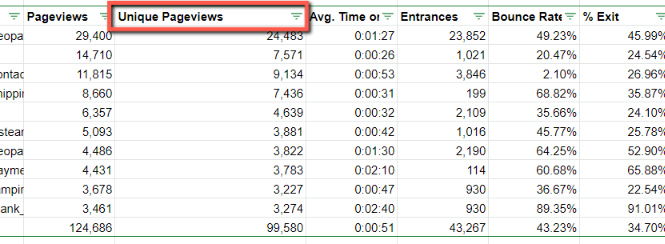
Now that you have a list of the pages you want to include in your audit, organize them by topic.
This will help you see which topics are most often covered on your website.
Now, take a close look at each topic and see how it's performing. For example, you might look at the number of pages ranking for each subject or the average amount of traffic each case is getting.
Also look at the engagement metrics for each topic, such as the average time spent on a page or the bounce rate.
Based on your content analysis, you can identify which topics are performing well and which could use some improvement.
3. Do a qualitative audit
In addition to a quantitative audit, you should also do a qualitative audit of your content.
A qualitative audit aims to assess content quality, using factors such as readability, user experience, and design.
This can help you spot gaps in your content marketing strategy and identify areas where your content could be improved.
For example, you might look at factors like:
- Word count
- Content formatting
- The layout of your pages
- UX
You might also want to look at whether your content is optimized for search engines or if you're using keywords correctly.
Qualitative audits give you an idea of the overall content quality and help you identify any areas that need improvement.
Since qualitative audits tend to be a bit more subjective, there is no definitive list of things you should look for.
However, here are some common factors to keep in mind:
- Readability: Is your content easy to read and understand? Are you using clear and concise language?
- UX: Is your content easy to navigate? Does it offer a good user experience and a joyful visitor journey?
- Design: Is your content optimized for mobile devices or other viewing platforms? Does it include visual elements (such as images and multimedia) to support your content?
- SEO: Is your content optimized for search engines? Are you using keywords in the right way?
- Funnel: Does this blog post contribute to the overall buyer’s journey?
Also, don't forget to assess your content from the perspective of your target audience.
For example, if you're writing for a technical audience, your content might need to be more detailed and in-depth than writing for a general audience.
If you're not sure how your audience perceives your content, you can always conduct user research or surveys to get feedback.
To perform a qualitative audit:
- Create a scorecard with all the factors you want to assess.
- Bring your team together to evaluate each page based on your scorecard. For example, you might ask each team member to assign a score between 1-10 to indicate the quality of your content.
- Analyze existing content individually and identify any areas that need improvement.
- Review your findings to see any trends, and make adjustments based on what you learn.
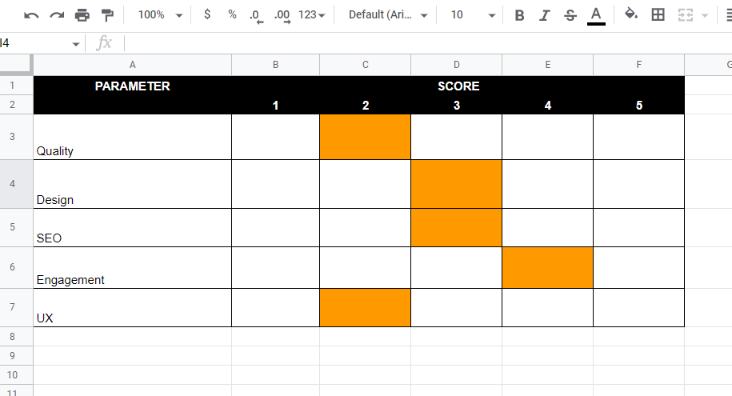
Remember, a qualitative audit isn't something that you do once. It's an ongoing process that you should repeat whenever you publish new content or change your website.
Which Tool Is the Best for Doing a Content Audit?
Now that you understand the importance of content auditing, you might be wondering which tool is best for performing one.
There are several different content audit tools that you can use, depending on your needs and budget.
Some of the most popular options include:
Google Analytics
Google Analytics works great for tracking your website's overall traffic and engagement metrics.
This can help you identify which content assets are getting the most traffic and engagement and which could use some improvement.
Best of all, Google Analytics is a free tool, making it an excellent option for those on a budget.
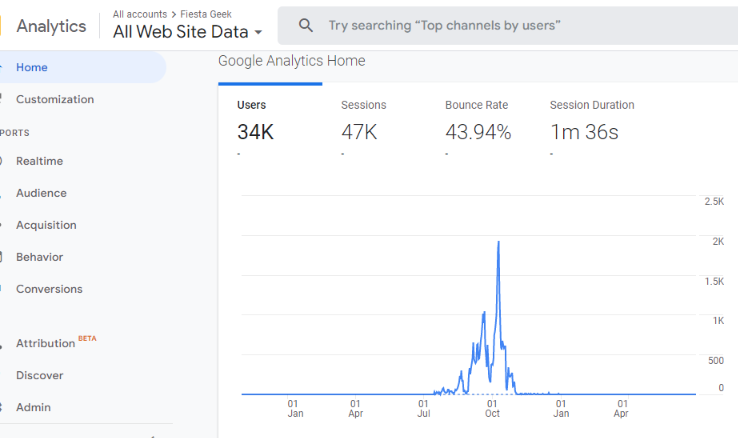
Screaming Frog
Manually crawling your website's pages is complex and time-consuming (for not saying impossible).
Screaming Frog is a popular tool that can crawl your entire website in just one or two minutes. This allows you to overview your site's structure, identify any broken links, find duplicate content, and more.

SEMRush
If you want to deeply dive into your site's search engine optimization (SEO), SEMRush is one of the best options.This tool can help you track your site's rank for specific keywords and optimize your title tags and meta descriptions.

BuzzSumo
BuzzSumo offers potent insights into your site's popularity and engagement.It helps you track your content's social media shares, identify your most popular content, and see who links to your site. This is especially helpful if you want to improve your content's reach and engagement.
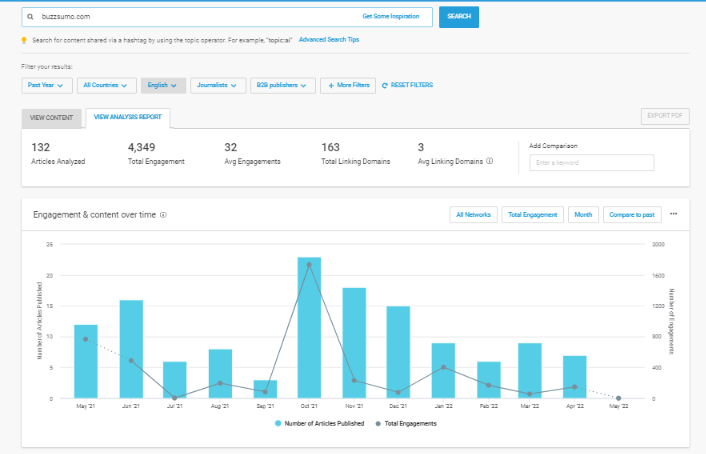
Grammarly
Although it's not exclusively a content audit tool, Grammarly is an invaluable resource for eliminating errors in your writing. It can help you catch typos and grammatical errors and improve your overall writing style.
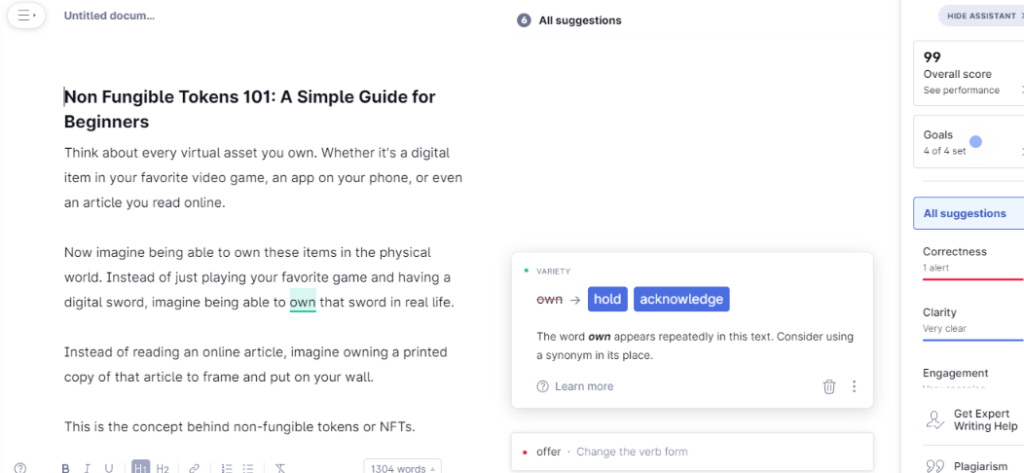
How Do I Analyze the Data?
At this point, you've collected a ton of data from your website content audit. Now what?
The next step is to analyze all the data you've gathered and identify any trends or areas needing improvement.
Let's explore a few techniques to do it:
Start with your qualitative data
When analyzing your data, it's essential to consider the difference between qualitative and quantitative data.
Qualitative data is subjective and can be measured using phrases, words, or non-numerical information.
Quantitative data is objective and can be measured using numbers or statistics.
Some techniques to analyze qualitative data include:
- Narrative analysis: This technique involves reading through your data and looking for any common themes or patterns.
- Discourse analysis: This technique focuses on the language used in your content, such as the tone and vocabulary.
- Grounded theory: This approach involves looking for patterns and relationships in your data.
- Thematic analysis: This approach identifies common themes and patterns in your data.
Whatever method you choose, it's essential to take the time to analyze your data thoroughly.
Doing so will help you spot areas for improvement and make adjustments as needed.
Your team will also need to decide how often you should run a content audit and what steps to take to complete one effectively.
Analyze your quantitative data
When analyzing quantitative data, it's crucial to look for trends or patterns.
Numbers don't lie, so you can make accurate conclusions about your site's content by looking at the data objectively.
Some techniques for analyzing quantitative data include:
- Cohort analysis: This technique allows you to track data over time to see how your metrics change as your content matures.
- Correlation analysis: This approach helps you identify relationships between different variables.
- Regression analysis: This technique allows you to predict how one variable will change based on another variable.
How Often Should You Perform a Content Audit?
How often you should perform a content audit depends on a few factors, such as the size of your website and how frequently you publish new content.
That said, content audits aren't a one-and-done task.
You should plan on doing them regularly, at least once a year, to ensure your site's content is up-to-date and optimized.
As you get familiar with the process, specific steps work better for you and can be shortened or streamlined.
The most important thing is to regularly perform a content audit and document your process to improve it over time.

